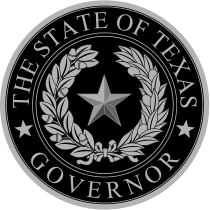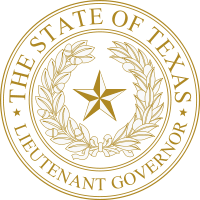Bob Bullock
| Bob Bullock | |
|---|---|
| 38th Lieutenant Governor of Texas | |
|
In office January 15, 1991 – January 19, 1999 | |
| Governor |
Ann Richards (1991–95) George W. Bush (1995–99) |
| Preceded by | William P. Hobby, Jr. |
| Succeeded by | Rick Perry |
| 34th Texas Comptroller | |
|
In office 1975–1991 | |
| Governor |
Dolph Briscoe Bill Clements Mark Wells White |
| Preceded by | Robert S. Calvert |
| Succeeded by | John Sharp |
| 72nd Secretary of State of Texas | |
|
In office September 1, 1971 – January 2, 1973 | |
| Governor | Preston Smith |
| Preceded by | Martin Dies, III |
| Succeeded by | V. Larry Teaver, Jr. |
| Personal details | |
| Born |
Robert Douglas Bullock July 10, 1929 Hillsboro, Texas |
| Died |
June 18, 1999 (aged 69) Austin, Texas |
| Resting place | Texas State Cemetery, Austin, Texas |
| Political party | Democratic |
| Spouse(s) |
(1) Amelia Hooks |
| Children |
(1) Lindy Bullock-Ward |
| Alma mater |
Texas Tech University (B.A.) Baylor University (J.D.) |
| Profession | Attorney |
| Religion | Presbyterian |
| Military service | |
| Allegiance |
|
| Service/branch |
|
| Years of service | 1951–1954 |
| Rank | Staff Sergeant |
| Battles/wars | Korean War |
Robert Douglas Bullock, Sr., known as Bob Bullock (July 10, 1929 – June 18, 1999), was a Democratic politician from Texas, whose career spanned four decades. His service culminated in his term as the 38th Lieutenant Governor of Texas from January 15, 1991 to January 19, 1999 during the term of Governor Ann W. Richards and the first term of Governor George W. Bush.
Political career
Bullock began his career in public service as a member of the Texas House of Representatives in the 1960s. After a stint as an assistant attorney general and in the private practice of law, Bullock returned to public life when he was appointed secretary of state, the state's chief elections and records officer, by Governor Preston Smith. Bullock soon left the post to prepare for a statewide race for state comptroller in the 1974 Democratic primary. Under Texas law, a secretary of state must resign in order to run for another office, a practice not required in most states. He served for four consecutive four-year terms.
Bullock, before he was widely known, was one of the few Texas Democrats to chastise John Connally for his party switch in 1973.[1] In 1998, Bullock himself would urge the reelection of a Republican, then-Governor Bush.
Texas Comptroller of Public Accounts
In 1973, Bullock first sought the Democratic nomination for Comptroller. The octogenarian incumbent, Robert S. Calvert, soon withdrew from the contest when he gauged Bullock's strength. In November 1974, he was elected in the general election defeating Republican Nick Rowe: Bullock garnered 1,099,559 votes (71.61%) to Rowe's 419,657 votes (27.33%). Once sworn into office in January 1975, Bullock promised to modernize the office and to collect certain taxes that had been previously gone uncollected for many years. The officials collecting such taxes were known as "Bullock raiders." Bullock was also the first elected state official to adopt an equal opportunity employment program, a policy that Calvert had opposed. Bullock was among the first elected officials to use computer technology in state government to cut costs and improve productivity. He was the winner of numerous national awards for his management skills, including the "Leon Rothenberg Taxpayer Service Award." During his sixteen years in office, Bullock pledged fair but aggressive audits. He made statewide headlines with a long series of "raids" on businesses which had collected state taxes from customers but had not turned them into the state. As an outgrowth of his tax collecting efforts, the term "Bullock's Raiders" entered the Texas government lexicon.
As Comptroller of Public Accounts, his frequent and increasingly accurate forecasts on state finances allowed the legislature to budget more accurately. He also developed a "Taxpayers Bill of Rights" to guarantee fairness, courtesy and common sense. Bullock was re-elected overwhelmingly in 1978 virtually unopposed garnering 1,288,320 votes (100.00%) since nobody bothered to run against him, in 1982 defeating Republican Mike Richards: Bullock garnered 1,791,650 votes (58.02%) to Richards' 1,245,328 votes (40.33%) and again in 1986 defeating Libertarian George Meeks: garnering 2,416,658 votes (90.02%) to Meeks' 267,872 votes (9.98%) and although Bullock refused to seek the governorship during the 1980s, he saw his eyes on the lieutenant governorship when on June 1, 1987, the longtime incumbent William P. "Bill" Hobby, Jr. of Houston announced he will not to seek re-election to a sixth term. Bullock quickly announced his candidacy for Lieutenant Governor in September 1987.
Lieutenant Governorship
In 1990, he was easily elected Lieutenant Governor, having defeated the 40-year-old Republican nominee, businessman Robert Mosbacher, Jr., of Houston, the son of the sitting United States Secretary of Commerce Robert Mosbacher. Bullock prevailed, garnering 2,002,360 votes (51.69 percent) to Mosbacher's 1,741,893 votes (44.97 percent) for the right to succeed the retiring Bill Hobby. Bullock took office on January 15, 1991, when Democrat Ann W. Richards became the state's second female governor. In 1994, Bullock was easily elected to a second four-year term as lieutenant governor defeating Republican Harold "Tex" Lezar. Bullock received 2,631,843 votes and (61.48 percent), while Lezar got 1,648,848 votes (38.52 percent). He was inaugurated for his second term on January 17, 1995, while Republican George W. Bush was sworn-in as the 46th Governor of Texas, having unseated Ann Richards. Bullock did not seek election to a third term in 1998, having been succeeded by Republican Agriculture Commissioner (and later Governor) Rick Perry on January 19, 1999.
Serving as Texas' 38th Lieutenant Governor, Bullock favored a hands-on management style that he carried onto the lieutenant governor's office and resulted in numerous achievements as the presiding officer of the Texas Senate.[2] Bullock overhauled the ethics laws during his first term in an effort to restore public confidence in state government. He created the Texas Performance Review for the State Comptroller to analyze spending at state agencies and recommended cost-saving alternatives. He helped consolidate all environmental agencies into one department in an effort to better serve Texans and protecting the state's natural resources. As the state's second-highest elected statewide officeholder, Bullock aggressively pushed through a constitutional amendment requiring voter approval before a state personal income tax can be enacted and requiring the money be earmarked for education, if voters approve the tax. He led efforts to modernize the Texas tax system and worked on state problems in tort reform, health and juvenile justice. Bullock was instrumental in finding a legislative solution to get Texas out of federal court lawsuits involving prisons and mental health. He was a leader in legislative efforts to revamp the state's educational funding system and ushered through a law that created the state's first comprehensive water conservation and management plan, and promoted establishing a state museum in the Capitol Complex. Lawmakers during the 76th Legislature voted to name the museum after him for his work on the project.
As Lieutenant Governor, he professed a nonpartisan approach to lawmaking, often telling members of the Texas Senate to leave their politics at the door. Bullock and Bush got along well, in part because Bullock got to lead an increasingly Republican legislature to agree to key laws and policies and "when they passed, Bullock and House Speaker Pete Laney allowed Bush to claim some credit."[2] Bullock unofficially endorsed Republican Governor Bush's presidential campaign even before it got off the ground. At a November 8, 2006, post-election press conference, a reporter from the Austin American-Statesman, who had covered Bush's tenure as governor, asked Bush if he thought then U.S. House Speaker-elect Nancy Pelosi resembled Bullock. The President replied that the reporter's question was an inside joke. The question was a thinly-veiled reference to the close working relationship, well known in Texas, to have existed between Republican Bush and Democrat Bullock; the reporter apparently was asking whether Bush would be capable of forging a similar bipartisan relationship with the members of the new Democratic legislative majority in the U. S. Congress.
Bullock was renowned for his blunt and sometimes politically incorrect speaking style, but also for his trademark closing line "God bless Texas." A lover of Texas history, he was instrumental in the establishment of the Texas State History Museum, located just to the north of the State Capitol in Austin. Opened to the public on April 21, 2001 (San Jacinto Day) after Bullock's death, it was named in his honor. The second-floor lobby of the museum features a seven-foot-tall bronze statue of Bullock holding a giant gavel, next to a gallery of items and a video from his career in politics.
Personal life
Born in Hillsboro in Hill County, Bullock attended Hill College, a junior college. In 1955, he received his bachelor's degree from Texas Tech University in Lubbock. He obtained a law degree from Baylor University in Waco. His political papers are housed in the Baylor Collection of Political Materials. Bullock also served in the U.S. Air Force during the Korean War. Bullock's adult life was marred by alcoholism and divorce; he had a total of five marriages, although at least one of them was a repeat. He stopped drinking in 1981 and remained active with Alcoholics Anonymous for the remainder of his life. Bullock died in Austin of cancer and is interred there at the Texas State Cemetery.
Texas State Highway Loop 20 in Laredo is named the Bob Bullock Loop in his honor. The Laredo Energy Arena is located just off the Bob Bullock Loop. The Texas State History Museum, located a few blocks north of the Capitol Building in Austin, is named to honor Bullock's efforts in the establishment of the facility.[3]
References
- ↑ Charles Ashman, Connally: The Adventures of Big Bad John, New York: William Morrow and Company, 1974, pp. 284–285
- 1 2 Dave McNeely and Jim Henderson (March 2008). "Bob Bullock: Experience Counts". Retrieved 23 September 2012.
- ↑ "About The Museum". Retrieved 23 September 2012.
External links
- Bob Bullock Story & Papers from Baylor University
- Bullock Gravesite at the Texas State Cemetery in Austin
- Texas State Historical Association Online of Bullock's biography and accomplishments
| Texas House of Representatives | ||
|---|---|---|
| Preceded by Jim Carmichall |
Member of the Texas House of Representatives from District 54 (Hillsboro) 1957–1959 |
Succeeded by Ronald E. Roberts |
| Political offices | ||
| Preceded by Martin Dies, III |
Secretary of State of Texas 1971–1973 |
Succeeded by V. Larry Teaver, Jr. |
| Preceded by Robert S. Calvert |
Texas Comptroller of Public Accounts 1975–1991 |
Succeeded by John Sharp |
| Preceded by William P. Hobby, Jr. |
Lieutenant Governor of Texas January 15, 1991 – January 19, 1999 |
Succeeded by Rick Perry |

